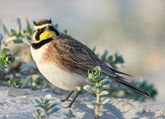Difference between revisions of "ISSS608 2017-18 T3 Assign Tan Yong Ying Conclusion"
Yy.tan.2017 (talk | contribs) |
Yy.tan.2017 (talk | contribs) |
||
| Line 25: | Line 25: | ||
|} | |} | ||
<br> | <br> | ||
| − | <div style="border-style: solid; border-width:0; background: #c8bdb9; padding: 7px; font-weight: bold; text-align:left; line-height: wrap_content; text-indent: 20px; font-size:20px; font-family:Century Gothic;border-bottom:5px solid white; border-top:5px solid black"><font color= #000000> | + | <div style="border-style: solid; border-width:0; background: #c8bdb9; padding: 7px; font-weight: bold; text-align:left; line-height: wrap_content; text-indent: 20px; font-size:20px; font-family:Century Gothic;border-bottom:5px solid white; border-top:5px solid black"><font color= #000000>Conclusion (Task 3 Answer)</font></div> |
| − | Task 1 | + | We hypothesize that the Rose-crested Blue Pipits may have been affected by certain activities at their old hangout location at the alleged dumping site. From Task 1 we see they had been found there in large concentrations pre-2014, had stopped singing in 2014 which shows they may have been under distress, and had moved away from there since 2015. These observations point to the high possibility that something bad had happened in year 2014 which caused this drastic shift in their hangout locations. |
| − | Task 2 | + | |
| − | + | From Task 2 we found that only two out of fifteen test files were recordings of the Rose-crested Blue Pipit, and both these files were recorded at locations far away from the usual hangout locations of the species. In addition, some of the fifteen test files do not appear to be recorded in the Preserve, as their spectrograms did not match any of the 19 species identified and provided by Mistford College. Overall, the set provided by Kasios did not support their claim that the Pipits are being found across the Preserve. | |
| + | |||
| + | The current collection strategy does not ensure an equal number of recordings being collected each period, which makes it difficult to support or refute the claim that the Pipits or any species are still living happily in the Preserve because it is compounded by the fact that some years have more recordings than other years overall. What seems like a reduction in species numbers during spatial analysis could actually be due to the reduction in recordings for those years. Moving forward, a consistent methodology for bird recording collection should be adopted. Explore the possibility of replacing the human collectors with sensors, so that the sensors can be configured to collect recordings at equal time intervals of the day, month and year. | ||
Banner image credit to: [https://www.flickr.com/photos/23660854@N07/24385545393 Marshal Hedin] | Banner image credit to: [https://www.flickr.com/photos/23660854@N07/24385545393 Marshal Hedin] | ||
Revision as of 15:46, 9 July 2018
|
|
|
|
|
|
|
We hypothesize that the Rose-crested Blue Pipits may have been affected by certain activities at their old hangout location at the alleged dumping site. From Task 1 we see they had been found there in large concentrations pre-2014, had stopped singing in 2014 which shows they may have been under distress, and had moved away from there since 2015. These observations point to the high possibility that something bad had happened in year 2014 which caused this drastic shift in their hangout locations.
From Task 2 we found that only two out of fifteen test files were recordings of the Rose-crested Blue Pipit, and both these files were recorded at locations far away from the usual hangout locations of the species. In addition, some of the fifteen test files do not appear to be recorded in the Preserve, as their spectrograms did not match any of the 19 species identified and provided by Mistford College. Overall, the set provided by Kasios did not support their claim that the Pipits are being found across the Preserve.
The current collection strategy does not ensure an equal number of recordings being collected each period, which makes it difficult to support or refute the claim that the Pipits or any species are still living happily in the Preserve because it is compounded by the fact that some years have more recordings than other years overall. What seems like a reduction in species numbers during spatial analysis could actually be due to the reduction in recordings for those years. Moving forward, a consistent methodology for bird recording collection should be adopted. Explore the possibility of replacing the human collectors with sensors, so that the sensors can be configured to collect recordings at equal time intervals of the day, month and year.
Banner image credit to: Marshal Hedin
